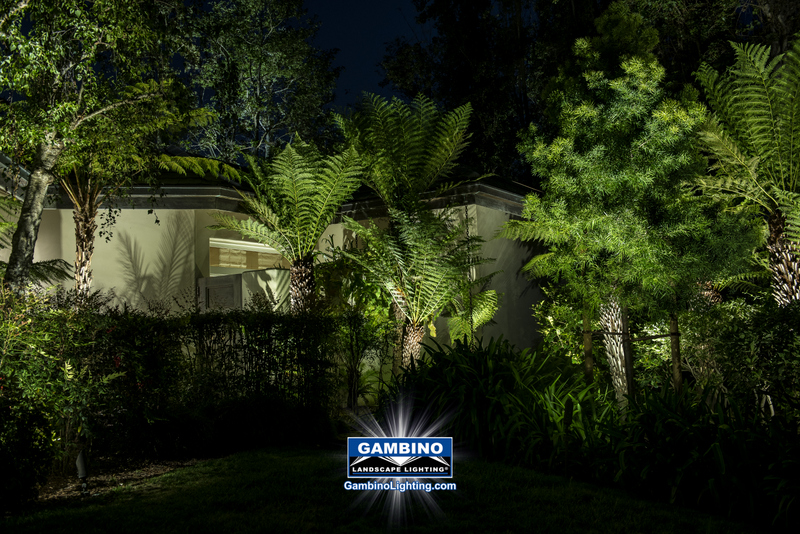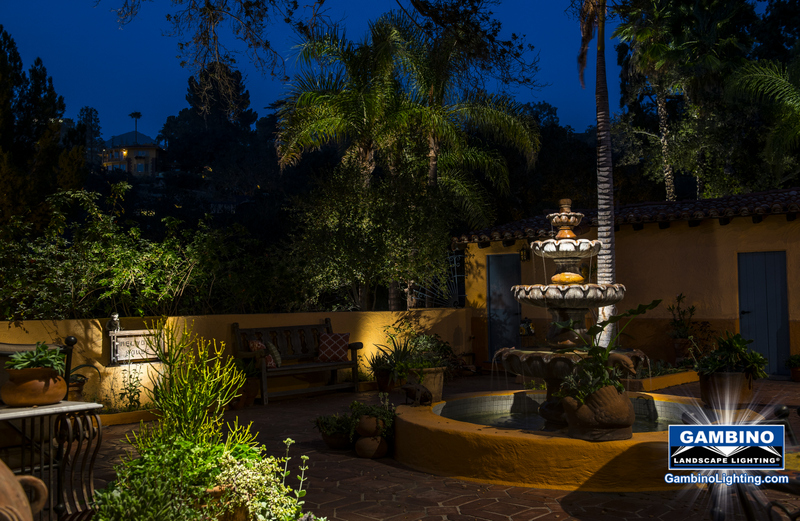19 Jul Landscape Lighting Isn’t Cheap: Do It Once And Do It Right !
By Mike Gambino
Landscape Lighting was once thought of as the cheap throw away plastic or pot metal kit lights bought at the discount department or big box store. They weren’t expected to last very long and where guaranteed to be problematic and not very bright or effective. A few years ago, you would have spent maybe $100 of your remodeling budget on lighting. But today It’s a whole new world of Landscape lighting,
 For Some, Skilled lighting design may not yet be the primary part of a new landscape or renovation project, but maybe it should be or at least it shouldn’t be an afterthought and should be given a budget commensurate with the rest of the project.
For Some, Skilled lighting design may not yet be the primary part of a new landscape or renovation project, but maybe it should be or at least it shouldn’t be an afterthought and should be given a budget commensurate with the rest of the project.
It’s best to have a bit of basic knowledge before starting. Once you’ve invested in the wrong products or professionals to install them, you’re stuck.
Still, lighting can be complicated to understand. The trade has its own language (know what lumens and Kelvins are?), and increasing costs can make decisions intimidating. So it makes sense to learn about lighting before you begin your remodeling project. Trust that you’ll love your end project much more when it sets the right mood and saves you money because you installed the correct fixtures and lamps from the get-go.
 Learning the Language of Lighting
Learning the Language of Lighting
Lighting design that’s done right has three layers:
1. Ambient (general lighting of a space).
2. Task (like to see to navigate a walk).
3. Accent (for highlighting a piece of art or focal point).
To do these three layers well, you’ll need to understand the terms used to describe lamps (light bulbs):
Kelvin: A scale of measurement for the “color” a light produces. The higher the Kelvin (K) number, the cooler the light appears. Most lampss will be in the 2,500K to 6,500K range — with 2,500 being the warmest and 6,500 the coolest. For reference, a candle burns at 1,900K and sunlight is 10,000K.
Wattage: How much electricity a bulb consumes. Most of us are used to wattage being an indicator of brightness (the higher the wattage, the brighter the bulb). Not so anymore. LEDs use far fewer watts than the old incandescents. Today, lumens are the gauge for brightness.
Lumens: The amount of light you get from a lamp — in other words, its brightness.
This chart from the Lighting Research Center shows how many lumens you need for particular tasks. If you’re older or your eyes are weak, you may want to increase the lumens.
| Task Area | Minimum Lumens |
| Reading | 98 |
| Outdoor Entryway | 996 |
| Dining table | 315 |
| Work counters | 360 |
| Range | 450 |
| Sink | 450 |
| Toilet | 45 |
| Vanity | 1,680 |
| Outdoor entrance | 996 |
| Paths | 297 |
| Flower beds | 972 |
| Stairs, entries, hallways | 1,200 |

Feel Like You Need Professional Help?
A long line of service providers are eager to help you add landscape lighting to your property. But when it comes to designing a lighting plan, you don’t always get what you pay for. Landscapers and electricians will want to design and install your landscape lights, and they don’t necessarily have the latest lighting design training and experience.
A specialist landscape lighting designer builder will do the best job for your project.
It’s a new world of landscape lighting. People have to think about it more than ever and consider its importance to the overall project.
Most Landscape Lighting design build professionals will design your plan for free, or for a small fee, if you buy all of the products through them and they do the installation..
Because selling lighting is their business, these professionals know all the latest lighting trends and products.
 This landscape lighting blog is published by Mike Gambino of Gambino landscape lighting inc. all rights
This landscape lighting blog is published by Mike Gambino of Gambino landscape lighting inc. all rights  reserved. Mike is a professional landscape lighting system designer/ builder and has been designing, installing and maintaining landscape lighting systems for more than 29 years. Mike resides in the Los Angeles area with his wife and 2 sons. To visit his website go to www.Gambinolighting.com . To inquire about hiring Mike please click here .
reserved. Mike is a professional landscape lighting system designer/ builder and has been designing, installing and maintaining landscape lighting systems for more than 29 years. Mike resides in the Los Angeles area with his wife and 2 sons. To visit his website go to www.Gambinolighting.com . To inquire about hiring Mike please click here .
Blog articles may be published with permission on other websites without editing or removing links.



No Comments